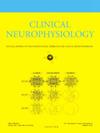标准化卡尔曼滤波用于并发皮层下和皮层脑活动的动态源定位
IF 3.7
3区 医学
Q1 CLINICAL NEUROLOGY
引用次数: 0
摘要
目的我们引入标准化卡尔曼滤波(SKF)作为一种新的时空追踪大脑活动的方法。通过卡尔曼滤波方案,计算工作量低,而且通过时空标准化,我们减少了非标准化卡尔曼滤波(KF)的深度偏差。方法我们从贝叶斯的角度描述了时空跟踪的标准化卡尔曼滤波方法。在使用真实的躯体感觉诱发电位(SEP)数据进行测试之前,我们构建了一个类似于躯体感觉诱发电位(SEP)活动的真实模拟装置,以验证所提出的方法。结果在实验中,SKF 与标准化低分辨率脑电磁断层扫描(sLORETA)和非标准化 KF 进行了比较。SKF 对皮层和皮层下 SEP 起源进行了适当定位,并跟踪了调查信噪比(25、15 和 5 dB)的 P20/N20 起源。结论 数值结果表明,SKF 继承了 sLORETA 的估计精度和 KF 的可追溯性,同时还能对 SEP 起源进行重点估计。本文章由计算机程序翻译,如有差异,请以英文原文为准。
Standardized Kalman filtering for dynamical source localization of concurrent subcortical and cortical brain activity
Objective
We introduce standardized Kalman filtering (SKF) as a new spatiotemporal method for tracking brain activity. Via the Kalman filtering scheme, the computational workload is low, and by spatiotemporal standardization, we reduce the depth bias of non-standardized Kalman filtering (KF).
Methods
We describe the standardized KF methodology for spatiotemporal tracking from the Bayesian perspective. We construct a realistic simulation setup that resembles activity due to somatosensory evoked potential (SEP) to validate the proposed methodology before we run our tests using real SEP data.
Results
In the experiments, SKF was compared with standardized low-resolution brain electromagnetic tomography (sLORETA) and the non-standardized KF. SKF localized the cortical and subcortical SEP originators appropriately and tracked P20/N20 originators for investigated signal-to-noise ratios (25, 15, and 5 dB). sLORETA distinguished those for 25 and 15 dB suppressing the subcortical originators. KF tracked only the evolution of cortical activity but mislocalized it.
Conclusions
The numerical results suggest that SKF inherits the estimation accuracy of sLORETA and traceability of KF while producing focal estimates for SEP originators.
Significance
SKF could help study time-evolving brain activities and localize landmarks with a deep contributor or when there is no prior knowledge of evolution.
求助全文
通过发布文献求助,成功后即可免费获取论文全文。
去求助
来源期刊

Clinical Neurophysiology
医学-临床神经学
CiteScore
8.70
自引率
6.40%
发文量
932
审稿时长
59 days
期刊介绍:
As of January 1999, The journal Electroencephalography and Clinical Neurophysiology, and its two sections Electromyography and Motor Control and Evoked Potentials have amalgamated to become this journal - Clinical Neurophysiology.
Clinical Neurophysiology is the official journal of the International Federation of Clinical Neurophysiology, the Brazilian Society of Clinical Neurophysiology, the Czech Society of Clinical Neurophysiology, the Italian Clinical Neurophysiology Society and the International Society of Intraoperative Neurophysiology.The journal is dedicated to fostering research and disseminating information on all aspects of both normal and abnormal functioning of the nervous system. The key aim of the publication is to disseminate scholarly reports on the pathophysiology underlying diseases of the central and peripheral nervous system of human patients. Clinical trials that use neurophysiological measures to document change are encouraged, as are manuscripts reporting data on integrated neuroimaging of central nervous function including, but not limited to, functional MRI, MEG, EEG, PET and other neuroimaging modalities.
 求助内容:
求助内容: 应助结果提醒方式:
应助结果提醒方式:


